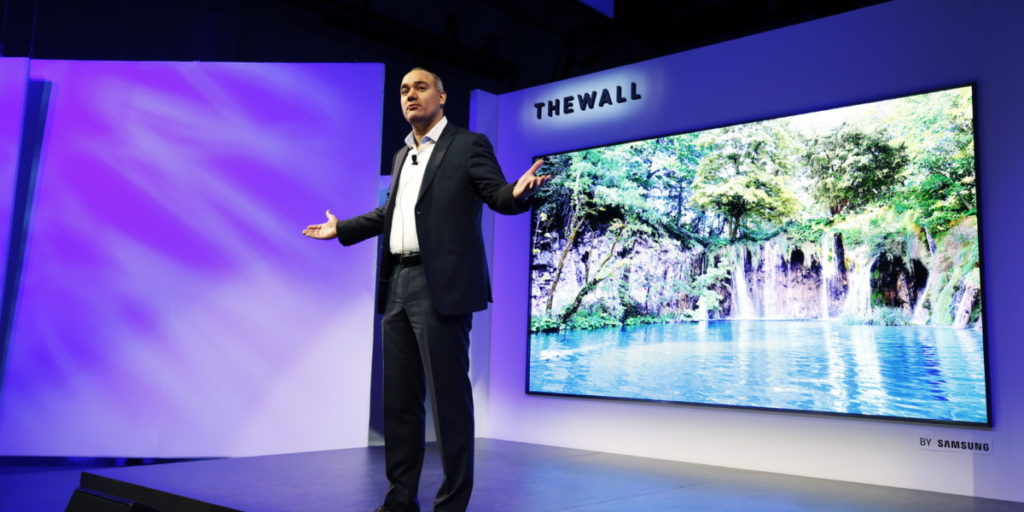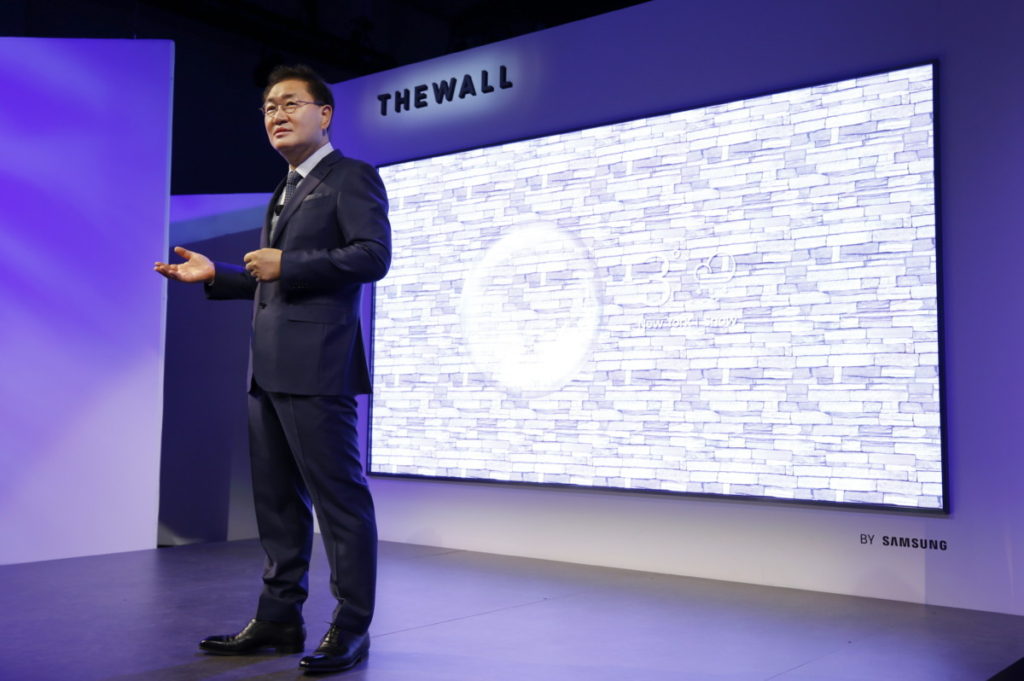
Samsung’s new 146-inch ‘The Wall’ MicroLED TV at CES 2018 has a name that matches its size
Most of the time, manufacturers tack on a jumble of names and numbers to indicate the make of a TV. In the case of Samsung’s latest modular TV, it has received a name that is both appropriate and awesome in equal measure. Dubbed, ‘The Wall’, Samsung’s latest TV is literally the size of a wall at 146-inches.
The new TV, which made its debut at CES 2018, is their latest concept telly – the tech within it won’t see service anytime soon – and is a glimpse at what lies down the line for their future generations of consumer TVs. To wit, The Wall is defined as a modular MicroLED TV.

The Wall TV is modular in the sense that rather than having to adhere to traditional limitations of current TV panels having to be rectangular in shape, it can be constructed in a host of different dimensions. Rather than one single solid panel like current TVs, a modular MicroLED TV is made up of a host of smaller modules, somewhat like panels of LEGO that can be arranged together to create shapes to suit the needs of a buyer like signboard-shaped panels or super tall ones. There’s just one pickle though – every microLED is assembled on a sub-pixel level so it takes an astronomical amount of time to finish one, let alone a panel as massive as The Wall.
The MicroLED technology means the Wall TV doesn’t need a backlight or a colour filter and the entire humongous panel consists of a host of micrometer scaled LEDs that are significantly smaller than current LED-backlit LCD TVs. Each microLED can be individually lit to offer deep blacks and brilliant contrast even without a backlight in a fashion somewhat akin to OLED.
 Samsung hasn’t mentioned what resolution The Wall will come in, let alone a price tag or availability but it’s a glimpse of the future of TV tech to come. Technologies closer on the horizon that will appear in Samsung’s line-up for 2018 include an 8K QLED TV slated to appear in the second half of the year. The TV will feature enhanced AI and a unique algorithm that can upscale content to 8K by scrubbing noise, cleaning up jagged edges and crisper details. Other additional features include Bixby making its way to TVs.
Samsung hasn’t mentioned what resolution The Wall will come in, let alone a price tag or availability but it’s a glimpse of the future of TV tech to come. Technologies closer on the horizon that will appear in Samsung’s line-up for 2018 include an 8K QLED TV slated to appear in the second half of the year. The TV will feature enhanced AI and a unique algorithm that can upscale content to 8K by scrubbing noise, cleaning up jagged edges and crisper details. Other additional features include Bixby making its way to TVs.
